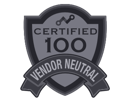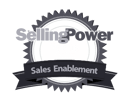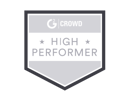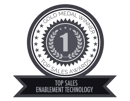
How to harness the power of flow to make more sales
If you could perform at the peak of your abilities, wouldn’t you want that? What if you could harness the same ability for everyone on your sales team? Steven Kotler, the co-founder of the Flow Research Collective and leading expert on human performance, says you can, by harnessing the power of “flow.”
What is flow?
Flow is “an optimal state of consciousness, a state where you feel your best and perform your best,” according to Kotler.
It refers to a state of consciousness when you are completely absorbed in a task or activity, so focused on it that you lose track of time and forget everything but what you are doing. In a state of flow, all aspects of performance, physical and mental, hit their peak.
You’ve probably experienced flow when you were doing something that you feel passionately about. It might be a physical activity such as a sport, a mental activity such as solving a problem, a communal activity such as brainstorming, a creative activity such as painting, or even a spiritual activity such as meditating.
The idea of flow is not new. People have been aware of this altered state of consciousness for as long as humans have existed. However, it was first fully explored and defined as flow by psychologist Mihaly Czikszentmihalyi in the 2008 book, Flow: The Psychology of Optimal Experience, and has since been more fully researched and developed by Kotler and the rest of the team at the Flow Research Collective.
Kotler says there are six qualities that define the state, and four “triggers” that are precursors. The triggers can be used to help you enter a state of flow.
The six qualities of flow
- Action and awareness merge. The only thing in your conscious awareness is the activity itself.
- Selflessness. Your sense of self disappears.
- Timelessness. You lose track of time.
- Effortlessness. The activity seems to lose all difficulty.
- Paradox of Control. You have a powerful sense of control over the situation.
- Intrinsic Motivation. In the moment of flow, you’re doing it for love, not money.
This combination of qualities results in a state of consciousness that supports peak performance for whatever activity you’re engaged in.
The four triggers for flow
- Intense concentration
- Challenge/skills balance
- Clear goals
- Immediate feedback
Flow can happen spontaneously, and many of us experience it without even realizing that’s what we’re doing. This can happen while enjoying a hobby or pursuing entertainment, or when serving some purpose we are passionate about.
However, flow can also be consciously sought and actively triggered in order to reach higher performance at work.
Organizations can set their people up for success by providing the conditions and cultivating the triggers that increase levels of flow on their teams. For sales organizations, this can mean hitting peak performance faster and more effectively than you might otherwise achieve.
Achieving flow in sales
Flow can help salespeople achieve better performance in both sales conversations and in their daily workflow.
Flow in the workflow
The importance of flow is literally coded in the words we use to describe our daily activities. A workflow is a way of working that flows naturally from one activity to another. Compare that to a work routine or a task list that is disjointed and requires a salesperson to switch tasks or tools frequently.
- Achieving a workflow means giving salespeople the space, the tools, and the training, to move naturally and without disruption from one task to another. This allows for intense concentration, the first of the four flow triggers.
- It means providing them with the tools and training to operate at the correct balance of challenge and skills.
- It means setting clear goals, not only on a large scale but on a day by day and moment by moment scale.
- Giving them the opportunity to experience quick feedback as they move through their work.
When you give your salespeople the right environment and triggers for flow in their daily work, they’ll be more efficient and more effective at achieving their quotas and busting your numbers.
Flow in sales conversations
Flow doesn’t only exist in solitary activities–it can be a communal experience. You’ve experienced flow in a conversation when you’ve engaged in a discussion that was so interesting you both lost track of time and didn’t want to stop because it felt exhilarating. If you play sports, you may have experienced flow when your team just seemed to “gel,” like you were reading each other’s minds and performing at your best together.
Imagine a sales conversation in which the buyer feels that way, so engaged that they don’t want to stop talking to your rep. Your salespeople can learn to create a flow experience for their buyers in every call.
- Flow in a sales call starts with identifying something that triggers the buyer to feel intensely interested and willing to concentrate. This means your salespeople must be buyer-focused, understand their buyers, and ask great questions to quickly reach the topics that matter most to each person.
- Next, salespeople must learn to ask questions that are challenging yet within the buyer’s expertise. These deep, probing questions can move the buyer into an optimal range of challenge/skills balance.
- The buyer must, at some point, develop a sense of purpose, and therefore clear goals, during the call. This can be established by helping them see how the conversation will move them closer to something they value. Smaller, moment by moment challenges can be established by asking probing questions that the buyer must stretch to answer.
- While the salesperson should focus on the buyer at all times, it’s important that they also provide ongoing feedback as the conversation proceeds, whether agreeing with or challenging the buyer to further examine their thinking.
Obviously, the skill of moving buyers into a state of flow is a challenging one to develop. Some salespeople seem naturally to have the “knack” of “flowing” conversations. Others have to learn it. Some never will (and will probably not succeed as salespeople).
You can support your sales teams in having more flowing conversations with better training, a clear process, and the right tools to support those conversations.
How Membrain can help
Tools like Membrain allow you to make your sales strategy actionable and informative directly into the salesperson’s CRM workflow so that they always have all of the information they need at their fingertips. Our built-in content hub serves up supportive content at the right times so that reps don’t have to break their concentration to hunt down the right piece of content. In fact, they never even have to leave Membrain to look for emails or org charts–everything is right in front of them, along with the immediate goal for their current task, including their goals for this particular sales conversation.
Checklists, other structured tools, and sales analytics provide salespeople with continuous, immediate feedback on how well they’re meeting short-term as well as long-term goals.
I’d love to get into the flow of a conversation with you about your team’s needs and how Membrain can help them spend more time at peak performance. Let’s schedule a moment of shared flow today.

By George Brontén
George is the founder & CEO of Membrain, the Sales Enablement CRM that makes it easy to execute your sales strategy. A life-long entrepreneur with 20 years of experience in the software space and a passion for sales and marketing. With the life motto "Don't settle for mainstream", he is always looking for new ways to achieve improved business results using innovative software, skills, and processes. George is also the author of the book Stop Killing Deals and the host of the Stop Killing Deals webinar and podcast series.
Find out more about George Brontén on LinkedIn







